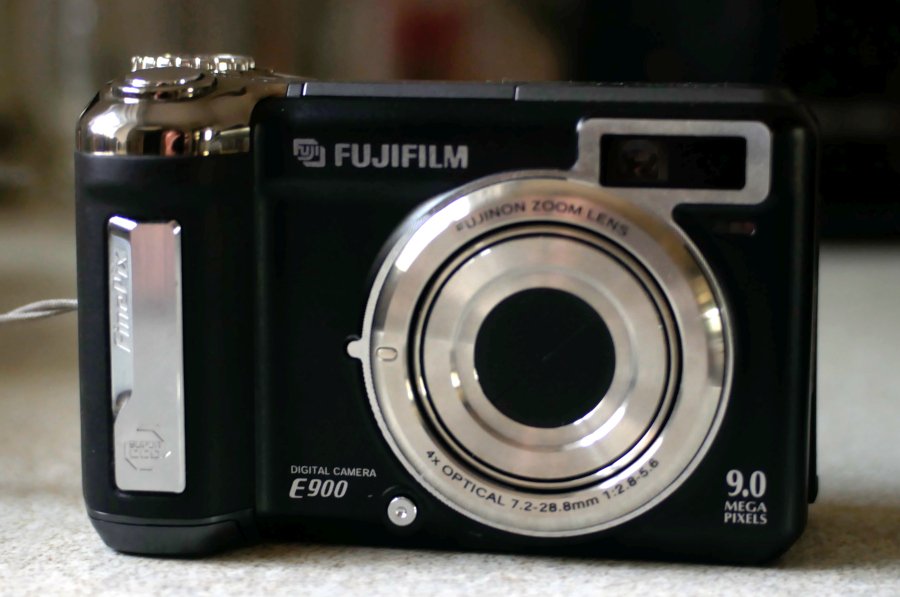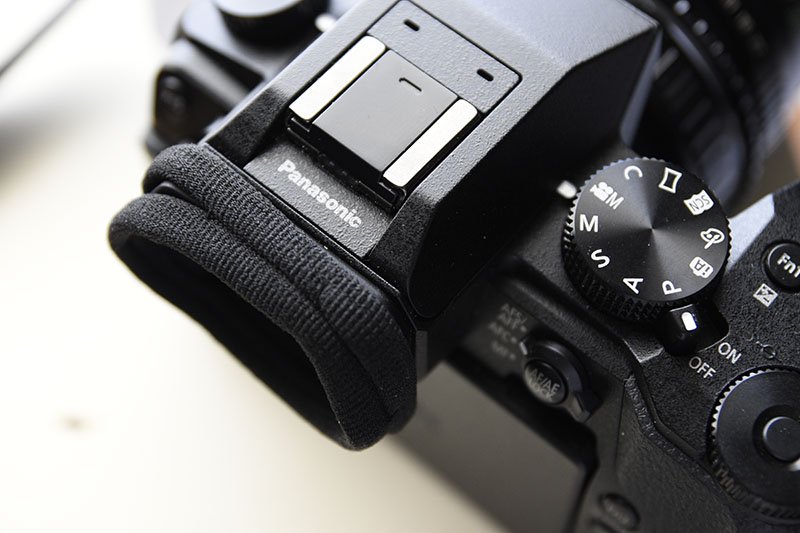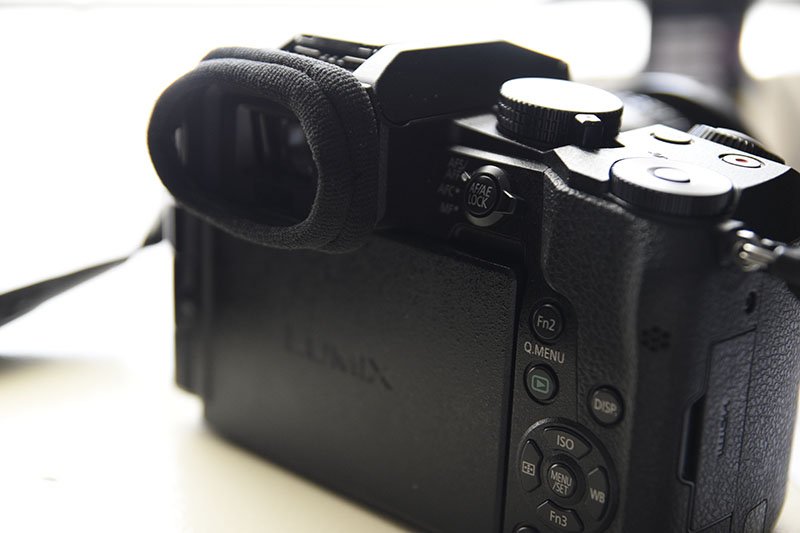
TrueIndigo
-
Posts
98 -
Joined
-
Last visited
Content Type
Profiles
Forums
Articles
Posts posted by TrueIndigo
-
-
Is the UHD crop mode on the X-T3 only available for high speed shooting? I was wondering if you can set lower speeds like 25 fps in crop mode (with a view to using some old C-mount lenses on it).
-
-
Potato Jet buys a cheap Arri classic:
-
When Andrew looked at the G9 he mentioned pincushion distortion in the EVF which he thought was distracting. I understand you can change the relative size of the generous EVF view in order to have the information icons appear outside the image area, so maybe that would help reduce the distorted view of the picture area? The only other comment I read about the G9's EVF distortion was that it was slight, and the user soon got used to it. Anyone here own a G9 like to comment on this?
-
If someone had hacked this two-year-old camera for 10-bit UHD video, the forums would have been amazed; the fact that Panasonic did it themselves is even more surprising. Makes amends for the relatively pointless G90 release.
-
-
Happy Valley - two-season box set (small town realistic police procedural investigation). Such good writing by Sally Wainwright; she seems to understand that not only does something need to be interesting, but the main characters need to be likeable too. Many times I find this is not achieved in TV drama - there's action, production values, hip cinematography, smart one-liners, but it goes for nothing because you just don't care about the people enough. It's almost as if aliens had written them and in a subtle way, got the wrong idea about us. The main characters in Happy Valley are ordinary, realistic, but we want to be with them because we care. So when we see a big close up of Sarah Lancashire with a bloodshot eye, it means something. This is old school drama at its best, with excellent actors to bring it out. Strongly recommended.
- Emanuel and EthanAlexander
-
 1
1
-
 1
1
-
"I think people would be surprised if they ever went back in time and watched the projections of most movies on the film circuit." -- The second (or third) run houses were pretty bad. I remember seeing Chariots of Fire at my local, and a few minutes coming up to every reel change the image was so scratched it looked like it was raining (a bit strange on the interior shots).
-
One thing I experimented with was "Two panel Cinerama". Historically, the real Cinerama process in the 1950s used three separate cameras, locked together, and the resulting three projected images were brought together on a single ultra wide screen. The two overlapping edges were blurred by using moving combs to help fuse the presentation together.
I did not hope to replicate all that stuff! As a simplification I used two camera positions, and in fact I just used one camera which filmed the two panels one after the other (two cameras would have been used for a "live" shoot). I had my camera display set for a "thirds" grid, and filmed the left side, then to shoot the right side I panned the camera on the tripod over by two thirds. This meant the image overlap would be one third in the middle.
In post, I would first create a custom wide canvas (the exact dimensions were arrived at after some tests) and import the left and right clips. You can temporarily lower the opacity of the top layer a bit to help the line-up of both panels by moving one of the clips into position. A simple feathered mask (which you can animate over time) is used on the top layer within the third overlap area, to make a sympathetic and less obtrusive join line according to the subject.
Yep, I realise all this sounds nuts (lots of restrictions compared to normal shooting), and I didn't do much with it, but it was fun. I messed around with this several years ago during the FHD era, but when I got an UHD camera, that canvas size seemed big enough to me to make 2-panel Cinerama a bit obsolete (you can mask it down to simulate an ultra wide look without much loss). One thing that it doesn't replicate of course is the wider field of view (just as using an anamorphic lens has a laterally wider field of view compared to just masking a 16:9 frame). It was quite interesting to shoot on a crop camera with say a 35mm lens but get a wide field of view by the two-thirds "extra" you get when you pan over to film the second panel.
- kye and heart0less
-
 1
1
-
 1
1
-
Anyone seen this video exposure shift when using manual adapted lenses, or is it just confined to Fuji auto lenses?
-
Michi, this Wiki page gives some info about Fuji Super CCD technology (link below). I remember seeing their promotional material at the time and it looked like a great idea for organic images. And of course it was a CCD (not CMOS). Andrew asked if I took stills -- not recently, but I remember when I first got it the stills struck me as having a very nice grain structure, very photographic, and the colours were vivid but retro vivid, not modern electric vivid.
https://en.wikipedia.org/wiki/Super_CCD
-
The camera used was a compact stills camera, the Fuji FinePix E900. I bought it new for £140 in May 2007 and haven't used it for seven years (the first thing I had to do was reset the clock!). The 4:3 video it shoots (auto exposure only) is 640 x 480 x 30p. I enlarged this with a video utility to make it 1440 x 1080 x 30p before editing on a 1920 x 1080 timeline, so the "Academy" shape was retained. But absolutely no exposure or colour changes were made, so the colours you see are straight from the camera. Interestingly, it's the auto exposure (and it's sudden changes within a shot) that makes it look amateur, more so perhaps than the ultra low resolution.
A sad sign of the times regarding increasing obsolescence: I took out the xD card to put in my computer multi-memory card reader, only to find that xD was not one of them! Luckily, the camera features a USB socket, so I could connect the camera directly to access the files.
Michi: "I'm particularly curious to see what camera @TrueIndigo has used. I liked the colours of that one the most." -- This camera features a 9MP 5th generation Super CCD HR sensor. From the days when Fuji photsites were octagonal in shape and some were of a different size -- wild times!
-
Here is my cheap DIY viewfinder eye cushion. I sewed together two elasticated hair bungees. The first one clasps the EVF surround, and the second one comes in a little over the viewfinder and makes a more comfortable cushion than the firm rubber eyecup. These things come in many different colours, though I chose photographic black to suit the camera. They also come in different sizes/thicknesses. You may be able to see from the scale of the Panny G7 what size these are (they fit quite tightly on the viewfinder surround, which is the main thing). Also using these lower profile hair bungees means I can swing the articulated screen past and it doesn't come off. You could choose a more bulbous bungee which would make an even more comfortable cushion, but if you are opening and closing the screen a lot it would be inconvenient.
- JordanWright and kye
-
 2
2
-
aaa123jc: "hopefully I won't lose my new camera" -- don't worry your camera's quite safe, I've just uploaded my entry:
- theraywong, mrjim, PannySVHS and 4 others
-
 7
7
-
-
For many years I used Final Cut at work and Premiere at home. Then a different sort of decision was approaching me -- I was surprised to realise my "latest workstation" was actually 8 years old! I had been shooting in UHD for a year or so and seemlessly went into a proxy workflow without much disruption, but even so, my machine was practically obsolete in computer terms. Why had I not upgraded before? I did not want Windows 10 with it's endless updates (Win 7 was fine by me). And I had also stopped at Premiere and After Effects CS6 (everything was of a similar age), because I did not like the Adobe subscription model. It seemed these two things that were important to me were coming together requiring a change of some sort! Having used Linux for many years, I decided I would take that route with my next workstation build, as a feasibility study. But how to replace Premiere? I looked, as I periodically do, to see what was the current situation with Linux NLE's, and tested the latest KdenLive and Shotcut, but finally settled on Cinelerra (the GG version) as being the closest to what I have been used to. Still finding my way, but it's looking to be the most serious contender. My Photoshop replacement is GIMP and Krita (more a paint program than an image editor).
-
Yes, I've watched quite a few videos shot by the GH5 which is why I'm interested in it as a future camera. And what you have said on other threads about grading makes a lot of sense to me. An attractive straight out of camera look is nice to have (I'm thinking of Fuji or Olympus), but not so important as grading (knowing what you want and being able to achieve it using the software of your choice). And camera usability now becomes more important to me since the technical threshold of UHD resolution has been met for most cheap cameras. I favour Panny because they just get out of the way to let you go to work (I owned a GH1 years ago and have a G7 now). Regardless of what may come next, I think the GH5 will remain a viable camera for some time because of it's high levels of usability and economic 10-bit codec for advanced post flexibility. The GH5 is as close to the mythical pocket cinema camera as I am likely to need for my skill level; what it makes available answers a lot of video shooting questions.
-
Many thanks, mate. Might be looking at getting this one later in the year (going to sell some lenses and books to help off-set the cost), so I wanted to get familiar with it early -- I have some reading to do ?
-
I don't yet own the GH5 and would like to read up about it, but can't seem to find a download for the user guide -- anyone have a direct link to the PDF?
-
Because I am of a certain age, in my youth I had a 16mm Bolex which featured a turret containing three Switar primes. You pulled the hinged chrome central stick to one side to use as a leaver and: click-click-click -- you immediately had a different lens in place. I don't miss the dark and dingy view through the prism block, though.
-
-
The Panasonic press release for the paid-for SI upgrade is on DPreview. Should be coming by July, but still no price:
https://***URL removed***/news/5805992591/panasonic-s1-10-bit-and-v-log-paid-upgrade-coming-in-july
-
Although Panasonic design continues on the unitarian theme, I must say these robust mag alloy bodies look very good to me, especially compared to say the P4K (if they were painted bright yellow, I'd half expect water to squirt out of the lens). For full frame weatherproof cameras they aren't much bigger than the MFT G9, and quite dwarfed by Olympus's recently announced E-M1X with the built-in battery grip. Unfortunately, for ultimate usability they stop short of featuring a fully articulated rear screen (even if you swear you'll never use it, it's great for protecting the screen when not in use), though I'd give them full marks for featuring the high (highest) resolution EVF unit.
Is the S1 too expensive at £2,199? I've previously thought it was a wrong move to charge near full frame prices for high end MFT cameras, though since the GH5S was the same body-only price (at £2,199 on release in January, 2018), I suppose I can't really argue against it now for an actual full frame mirrorless camera. If the promised firmware update doesn't deliver though, it may date these first FF Pany's quite badly in the next few years if you considered them as a long term investment.
Still no details about the rolling shutter performance from the VistaVision size sensor in video mode, compared to the fast readout we have become used to now in the MFT format. So much will depend on that video update to bring the S1 alive, otherwise the future GH6 may prove to be too much competition for less money. And perhaps a little embarrassing if the S1 doesn't get certified as a Tier 1 camera by the EBU, when the two-year-old GH5 is.
-
The standard definition 16:9 proxy frame size I use is 1024 x 576.





Fuji X-T3 and X-T4 discussion
In: Cameras
Posted
Thanks for the info. In C-mount I have a Schneider 10mm, Angenieux 15mm and a Bausch & Lomb 26mm which would be fun to try out.